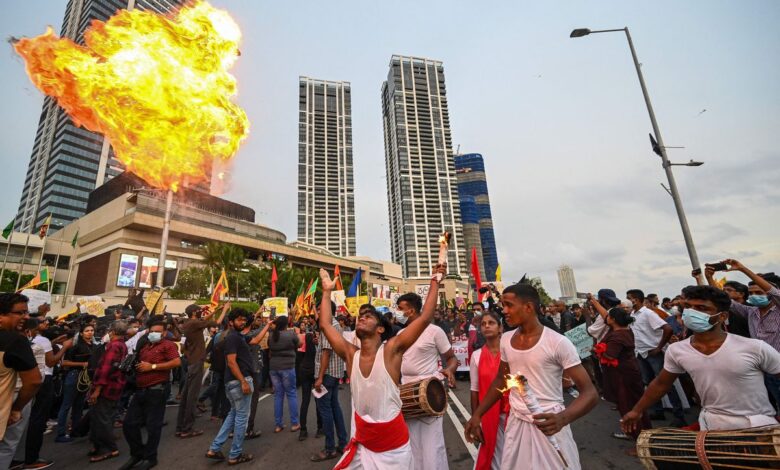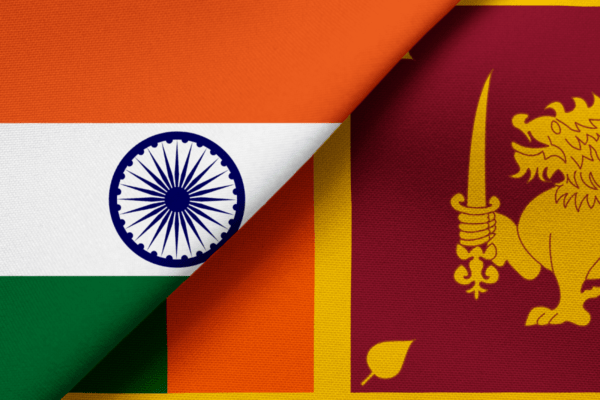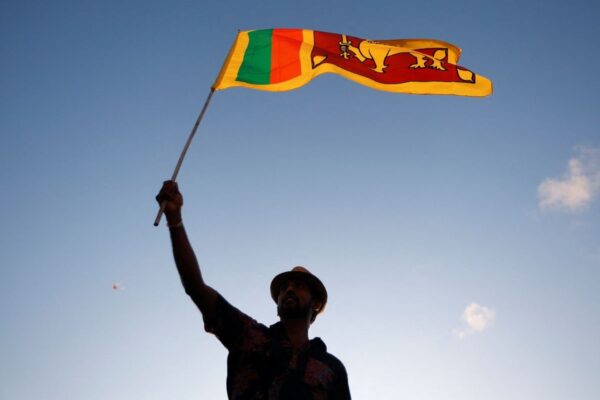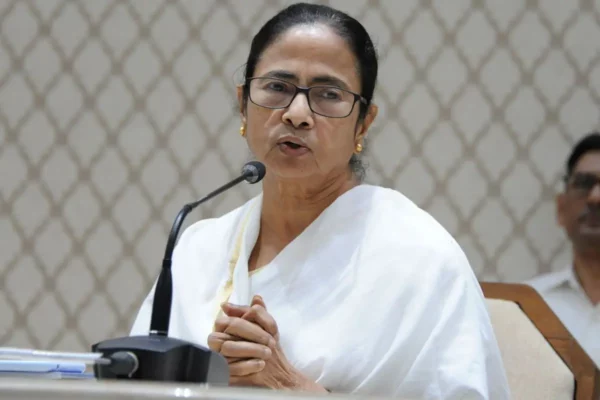Is India approaching Sri Lanka’s doom? although the Indian government is not much concerned about it

Is India approaching Sri Lanka’s doom, although the Indian government is not much concerned about it?
India is moving quickly to help Sri Lanka to get out of the hardships its citizens are going through. Let’s know about Sri Lanka’s overall situation and the help India has provided. Is India’s help for Sri Lanka driven by self-interest or sincere concern?
Overview of Srilanka situation
The country of Sri Lanka is managing one of its worst economic crises in history, people demanded the resignation of Gotabaya Rajapaksa led to Ranil Wickremesinghe, the country’s prime minister, being sworn in as interim president.
Due to a serious lack of foreign currency, Rajapaksa has been unable to purchase fuel and other necessary imports, which has caused disastrous power outages that sometimes last up to 13 hours. Sri Lankans have to deal with the crisis and rising prices on a daily basis.
The biggest financial crisis in several decades, according to critics, was brought on by past governments’ poor economic management, which led to and maintained a dual deficit—a shortfall in the budget and a deficit in the current account.
Sri Lanka is a deficit economy, according to a working paper from the Asian Development Bank in 2019. “Twin deficits” shows that a country’s production of tradable products and services is insufficient and that its national expenditures are more than its national revenues.
The minimum tax cuts promised by Rajapaksa during the 2019 election campaign and implemented months before the COVID-19 pandemic, which decimated portions of Sri Lanka’s economy, hastened the current problem.
Credit rating agencies hurried to lower Sri Lanka and mainly cut it out of the global capital markets due to the pandemic’s disastrous effects on the country’s tourism industry and the remittances brought home by migrant workers.
“Due to the failure of Sri Lanka’s debt management program, foreign exchange reserves fell by about 70% in just two years.
The Rajapaksa proposal restricts all chemical fertilizers starting in 2021—a decision that was later twisted which had the effect of reducing the crop of rice—it impacted the country’s agriculture sector.
The country has only $2.31 billion in reserves in February, but it will have to pay back about $4 billion in debt in 2022, including a $1 billion international sovereign bond (ISB) that will mature in July.
At $12.55 billion, ISBs account for the majority of Srilanka’s foreign debt; and include the Asian Development Bank, Japan, and China.
The IMF stated that the national debt had reached “unsustainable levels” and that the country’s foreign exchange reserves were not enough for short-term debt coverage payments in a review of the economy that was published last month.
The IMF report’s conclusion and the government’s most recent actions, according to Citi Research, were insufficient to restore debt sustainability, clearly highlighting the necessity for debt restructuring.
In this difficult moment of turmoil, How India has supported Sri Lanka.

Due to a lack of foreign exchange reserves, Sri Lanka cannot import adequate food, cooking gas, and other essentials.
India hurried consignments containing humanitarian aid as the crisis in Sri Lanka grew worse. According to current information from the MEA, India has already provided Sri Lanka with aid of more than USD 3.8 billion to help the country’s dire economic circumstances.
India’s support for Sri Lanka during its greatest economic crisis in independent history has been emphasized once more. India was the only nation, according to Srilanka’s Minister of Power and Energy, to have given Colombo a credit line.
According to the minister, Sri Lanka is also in discussions with the Russian government. “The initial conferences took place in Russia. And the situation is very clear.
The type of facility that will be employed has not yet been announced.
India hurried consignments having humanitarian aid as the crisis in Sri Lanka grew worse. India has provided assistance totaling more than USD 3.8 billion to help improve the dire economic condition.
New Delhi has provided help in the form of currency swaps, a deferral of Sri Lanka’s payments due to the Reserve Bank of India under the Asian Clearing Union mechanism, and credit assistance totaling more than USD 1.5 billion for the purchase of fuel, food, medicine, fertilizer, and other necessities.
Sanath Jayasuriya, a former star cricketer for Srilanka, thanks India for helping Colombo. He declared: “As our neighbor and big brother, India has always stood behind us. We are grateful to the Indian government and Prime Minister Narendra Modi. It is difficult for us to survive right now because of the circumstance. We intend to overcome this with the aid of India and other countries.”
Keeping the Indian economy in mind Is India making any efforts to assist Sri Lanka, yet they are still having problems?
Three graphs are seen by the former Congress president to compare the economies of the two South Asian countries in terms of intergroup violence, fuel costs, and unemployment.
He also charged that the administration was using other concerns to divert attention away from its own failings, problems with rising prices, and issues with unemployment.
There are currently very few economies that are not feeling the effects of the geopolitical crisis that resulted from the war between Russia and Ukraine. Almost all economies around the world are currently dealing with its effects.
Everything, from tourism to international trade, was either shut down or taking place on a very small scale, which had a negligible effect on a nation’s foreign exchange reserves.
Cereal crops, including wheat, maize (corn), and barley, are net exports from this country. Sunflower oil, one of the most popular vegetable oils worldwide, is also a dominant export for both. Sunflower oil imports are crucial to India’s local food supply.
Srilanka’s contributed to India’s overall exports, which was 2.16 percent in FY15, dropped to barely 1.30 percent in the first ten months of FY22. The 6.7 billion dollars in exports from India to Sri Lanka for the years 2014–15 are no longer present. In FY22, it was 4.49 billion dollars as of January 2022.
But there is also a bright side. Foreign buyers of the product are calling Indian planters and exporters in droves because Sri Lanka is the world’s top exporter of orthodox tea.
According to reports, importers of Sri Lankan goods from Iran, Turkey, Iraq, and Russia are traveling to Kolkata and the Assam tea estates. As a result, compared to comparable sales last year, the average price for orthodox leaf increased up to 41% in recent Kolkata auctions.
Sri Lanka’s garment industry is suffering from a gasoline shortage. The US International Trade Administration estimates that the export of garments makes up roughly 44% of all exports from the nation. India is now receiving a large number of garment orders from the UK, EU, and Latin American nations.
Several orders have been given to businesses in Tirupur, the center of Tamil Nadu’s textile sector.
For India, Sri Lanka has been a crucial strategic ally. Even while some of our enterprises are affected and others strive to fill the hole left by the crisis in Sri Lanka, India’s support in this hour of need will only strengthen ties with the island country, which has always had a strong Chinese influence.
India also strongly relies on Colombo port for foreign trade because it acts as a transshipment hub. 60% of India’s transshipment of goods is managed by the port.
In turn, cargo relating to India makes up to 70% of the total amount of transshipment through the port.
India has long been one of Sri Lanka’s main trading partners. India was Sri Lanka’s main source of tourists before the outbreak. India accounts for more than a fifth of all imports into Sri Lanka.
The major source of foreign direct investment in Srilanka comes from India. From 2005 to 2019, India’s FDI totaled roughly $1.7 billion. India, at $139 million, was the third-largest source of FDI for Sri Lanka in 2019 behind China and the UK. India makes the most of its investments in the following sectors: retail petroleum, tourism, hotels, manufacturing, real estate, telecommunications, banking, and financial services.

Leading Indian businesses have made investments and established bases of operations in Sri Lanka. Indian Oil, Airtel, Taj Hotels, Dabur, Ashok Leyland, Tata Communications, Asian Paints, SBI, and ICICI Bank are a some of these.
Although it is not a major trading partner for India, Sri Lanka is a geopolitically significant nation, and India must work to offset the growing Chinese influence on its economy.
Only 1.3 percent of India’s total exports, or $4.8 billion, were sent to Sri Lanka each year. Just 0.16 percent of India’s total imports came from Sri Lanka.
Any hiccup in Colombo port operations exposes India to rising prices and traffic problems. While construction on Kerala’s transshipment center has started, it is in India’s best interest to assist Sri Lanka in short-term economic recovery.
Is the situation the same in India?
Rahul Gandhi, the leader of the Congress, said on May 18 that with regard to the problems of unemployment, gasoline prices, and communal violence, which have increased over the past five years, India “looks a lot like Sri Lanka.”
Gandhi tweeted, “Distracting people won’t change the facts,” along with a collection of six graphs showing the apparent similarities between India and debt-ridden Sri Lanka between 2017 and 21. India resembles Sri Lanka a lot.
The first set of graphs shows an increase in unemployment in both countries starting in 2017, reaching a peak in 2020 during the COVID-19 epidemic and the ensuing national lockdowns in India, before declining the following year.
In the past four to five years, the cost of necessities has soared. In a city like Nagpur, the price of an LPG gas cylinder has increased from Rs 410 to Rs 1,100. The price of edible oil has increased from Rs 70 to Rs 200 per liter, and the price of CNG has increased from Rs 36 to Rs 90 per kg.
According to him, the scenario in India is similar to what it was in crisis-hit Sri Lanka three years ago, and if action is not taken quickly enough given the gravity of the problem, it won’t be long before things go out hand.
However, the government is falsifying the data to provide the false impression that inflation is under control. By lowering some food grain estimates, it is hoped to know that inflation has decreased. By manipulating the figures, the government can provide a deceptive picture, but the reality is far different.
At present, India’s debt has increased to 92% of its GDP (GDP). By next month, the government must pay back a 267 billion USD debt. These facts are being kept from the public by the government.
In order to draw attention away from the important and pressing concerns, the administration is bringing up religious matters.
But it will come at a high price. The Congress party is protesting the Center’s bad policies, and the government needs to resolve the core concerns of the populace quickly.
With millions of people not able to pay for essentials like food, medicine, and fuel, Sri Lanka, a country of 22 million people, is going through its worst economic crisis in seven decades.
Despite the fact, that the devaluation of the rupee in comparison to the dollar has been called a major failure, there are two important factors that should be taken into account.
Exporters may profit from the rupee’s depreciation as it has done well in comparisons to currencies like the British pound and the euro. The current account deficit and capital outflow brought on by a rate hike by the US Federal Reserve are factors influencing this variation.
The states in India’s federal system manage the part of economic growth. Local leaders are becoming irresponsible, announcing incentives and bringing back financially risky programs ( previous pension plan). The power of politicians seems unconcerned despite the fact that this issue was raised a few months later.
The states received revenue assurances from the Goods and Services Tax for a five-year term, and some extravagances were covered by the federal government’s reimbursement to the states. It is now important to realize that chief ministers cannot keep using the center as a bargaining chip while receiving a free meal.
In view of continued price increases in India, Mamata Banerjee, the chief minister of West Bengal, has pushed for the call of an all-party meeting to tackle the inflation problem.
What Mamata Banerjee said is what we should do, work together to find an answer in the best interests of the country, Raut retorted.

The Shiv Sena leader criticized the Centre for skirting the subject of inflation and asserted that the administration is only concerned with politics and election-related issues.
Nobody has commented on the increase in gasoline and diesel prices that followed the end of the election in Uttar Pradesh. The Rajya Sabha discussion on a fuel price increase came to a close yesterday.
However, neither the government nor anyone who is concerned about inflation is making any public comments about it. What should we do? He asserted that there is nothing for governance other than elections and politics.
Due to the rise in crude oil prices following Russian military activities in Ukraine, there had been a pause in the revision of gasoline prices since 4 November of last year. This pause ended on 22 March.
Raut stated that the Center allayed concerns about inflation. When discussing the increase in gas prices, they will bring up topics like the hijab and halal. When will this occur?
Opposition parties are now again seated close to one another, he continued. Notably, the price of gasoline and diesel increased by 80 pence each on Tuesday for the thirteenth time during the course of the previous fifteen days.
Inflation that has never been seen before is ruining India’s economy. According to government statistics, the annual inflation rate in India increased to 6.95 percent in March 2022, the highest level since October 2020. Similar to this, in March the wholesale pricing index hit its second-highest level.
It is evident that India’s economy is having two problems given that the present spike in inflation is a result of the quickly rising prices of things around the world, mainly oil (which rose to 83.56 percent in March from 55.17 percent in February). Because of this, several requirements now call for increased import taxes. A disruption in the global supply chain has also resulted from the conflict between Russia and Ukraine.




